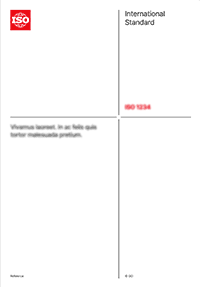Abstract
This document defines methods that measure amounts of bacterial cells or a marker gene DNA to obtain the total abundance in environmental aqueous samples, such as seawater and river water, for biodegradability assessment. Amounts of a marker gene DNA enable to give a prediction of abundance of bacterial cells by using a conversion factor such as average number of the marker gene homologues in a bacterial cell. The methods could be also applicable to aqueous samples artificially enriched with bacterial cells released from environmental sediments. In addition, this document is applicable to solution with bacteria extracted from environmental sediments and plastic surfaces, where appropriate pre-treatment might be defined elsewhere. In the document, the method provides measurement of prokaryotic bacterial cells, though eukaryotic microorganisms are out of scope.
NOTE Eukaryotic microorganisms, especially fungi, are well known to be primary decomposers in land, but the role in hydrosphere has been less documented and is largely unknown yet. Actually, the proportion of fungi in the ocean whole microbial metagenome has been reported as low (fungal reads make up 1,4 % to 2,9 % (2)).
General information
-
Status: Under developmentStage: Committee draft (CD) registered [30.00]
-
Edition: 1
-
Technical Committee :ISO/TC 61/SC 14
- RSS updates


